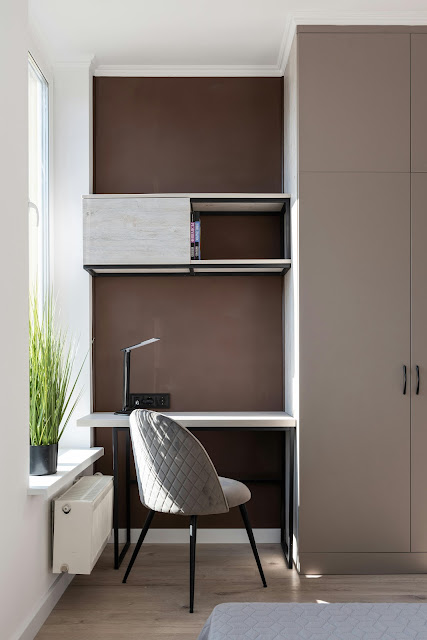Living in an apartment doesn’t mean sacrificing coziness or serenity. On the contrary, with intentional design and thoughtful practices, your apartment can become a warm, inviting sanctuary where you unwind, recharge, and feel at peace. This guide will show you how to create a cozy haven, even in a small space, while nurturing your mental health and self-care routine.
Remember, true wellness goes beyond physical comfort—it also includes mental well-being. Therapy is an integral part of this journey, offering you a space to process, grow, and thrive. As we walk through these steps, let’s explore how small changes can lead to a more harmonious living space and life.
Outline
1. Setting the Mood with Lighting
2. Creating a Clutter-Free Space
3. Incorporating Soft Textures and Warm Colors
4. Building Your Personal Relaxation Nook
5. Blending Indoor and Outdoor Elements
1. Setting the Mood with Lighting
Lighting sets the tone of your space. In a cozy sanctuary, it’s about creating warmth and inviting calmness. Here's how to make the most of your apartment’s lighting:
Use Layered Lighting: Combine overhead lights, table lamps, and floor lamps. Choose warm bulbs (2,700–3,000 Kelvin) to avoid harshness.
Embrace Natural Light: Maximize your windows by using sheer curtains that allow sunlight to stream in during the day. This not only brightens your space but also uplifts your mood.
Add Accent Lighting: String lights, LED candles, or under-cabinet lighting can add subtle charm and coziness.
Lighting can profoundly influence your mental state. Creating a soothing ambiance through mindful lighting choices can complement wellness practices like therapy, grounding you during your self-care routine.
2. Creating a Clutter-Free Space
Clutter can cause anxiety, making it harder to relax at home. Transform your apartment into an oasis of calm with these decluttering strategies:
Adopt Minimalism: Evaluate your belongings and keep only what brings you joy or serves a purpose.
Introduce Storage Solutions: Use stylish baskets, shelving, and multifunctional furniture to organize items and reduce visual clutter.
Create Zones: Define areas for specific activities, like work, dining, and relaxation. This helps maintain order and prevents overlap.
A tidy space mirrors a clear mind. Complement your decluttering efforts with therapeutic practices like journaling or therapy sessions to process emotions and deepen your wellness journey.
3. Incorporating Soft Textures and Warm Colors
Textures and colors have a powerful impact on how a space feels. Use them to add layers of comfort to your apartment:
Add Throw Blankets and Pillows: Choose soft, plush materials like faux fur, velvet, or knit fabrics. Layer them on your sofa or bed for an inviting look.
Incorporate Rugs: A soft rug underfoot can instantly make your space cozier, especially in the living room or bedroom.
Paint or Decorate with Warm Tones: Colors like beige, terracotta, mustard, and blush create a comforting atmosphere.
These design elements not only enhance physical comfort but also encourage emotional warmth. A therapist might suggest surrounding yourself with comforting textures and colors to reinforce positive feelings and relaxation.
4. Building Your Personal Relaxation Nook
Everyone needs a corner to escape to—a space designed solely for relaxation and self-care. Here's how to create your personal haven:
Choose a Quiet Spot: Pick a corner with minimal distractions. A small section of your bedroom or living room can work perfectly.
Add a Comfortable Seat: A cozy armchair, beanbag, or floor cushions will provide comfort.
Incorporate Personal Touches: Add books, candles, essential oil diffusers, or your favorite artwork.
Set Boundaries: Make it a phone-free zone to encourage mindfulness and rest.
A relaxation nook is also an ideal place to practice therapy exercises like mindfulness or meditation. If you're considering therapy, this space can double as your private retreat for sessions or self-reflection.
5. Blending Indoor and Outdoor Elements
Bringing nature into your apartment connects you to the outdoors, which is proven to boost mental health. Here's how to do it:
Incorporate Plants: Choose low-maintenance greenery like pothos, succulents, or snake plants. They purify the air and add life to your home.
Use Natural Materials: Opt for furniture or decor made of wood, rattan, or linen.
Create a Mini Balcony Garden: If you have a balcony, add outdoor seating and potted plants for a tranquil escape.
Connecting with nature—even indoors—can significantly reduce stress. This approach complements therapeutic practices, grounding you in the present moment and fostering a sense of balance.
Conclusion:
Creating a cozy sanctuary in your apartment is more than an aesthetic choice; it’s a commitment to your well-being. By focusing on lighting, organization, textures, relaxation spaces, and natural elements, you can transform your living space into a haven of peace.
As you embark on this journey, remember that true wellness is holistic. Therapy is a valuable part of self-care, offering support as you navigate life’s challenges. Whether through professional sessions or self-guided practices, it can help you cultivate inner calm and clarity—just like your cozy sanctuary.
Your apartment can be more than a living space; it can be your personal retreat. So take the first step today—your sanctuary and well-being are worth it.
















0 Comments